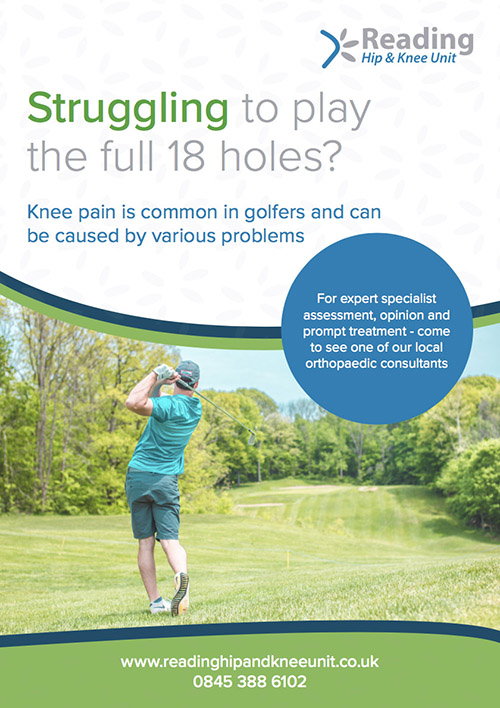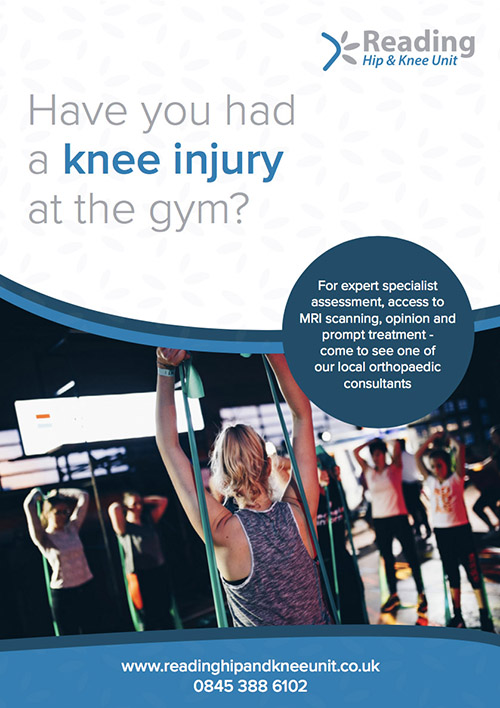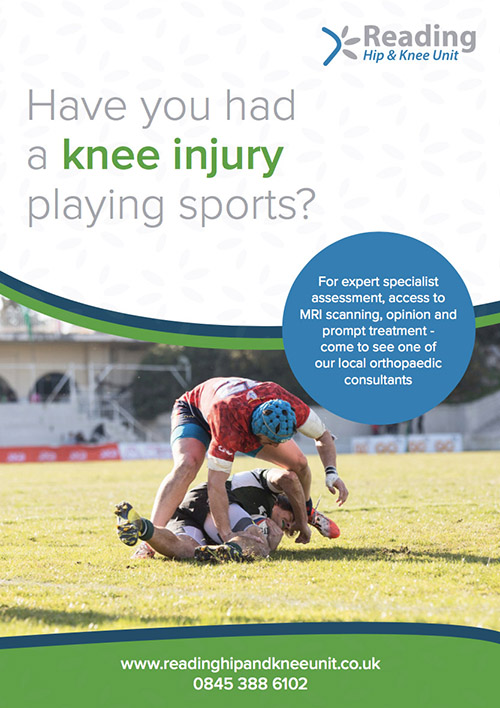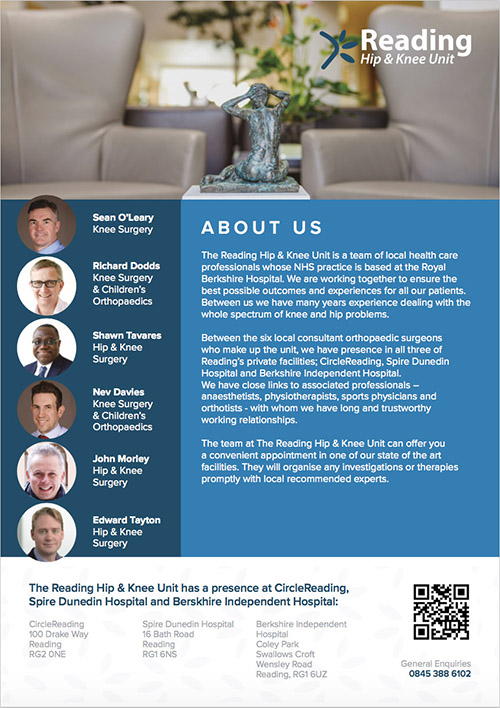Anaesthesia For Surgery
General anaesthesia (GA) is currently the most widely used technique for all types of knee surgery in Reading as it is in the rest of the UK.
General Anaesthesia is often used in combination with local anaesthetics either injected around the area of surgery or in the form of a nerve block with the aim of enhancing post operative pain relief for a period of time after the operation is finished.
Spinal anaesthesia, which is similar to an epidural, uses an injection around the nerves in the lower part of the back to produce loss of sensation below the waist and is an alternative to general anaesthesia It may be combined with either sedation or general anaesthesia and has advantages for some people but is less widely used mostly because it is more technically demanding and less acceptable to many patients.
Anaesthesia is now seen as being very safe not only because of developments in technique and equipment but also because of the careful preparation of patients pre-operatively, and the experience of the theatre team in caring for people having knee surgery.
General Anaesthesia
Low risk of major complications such as heart or breathing problems but people with pre-existing health conditions need to have these as well controlled as possible beforehand to reduce risk.
Need additional pain relief around and during the operation such as anti-inflammatories, paracetamol and strong pain relief.
Associated with around 5% risk of nausea and vomiting even when anti-sickness medication is used.
Sore throat is common afterwards but it is uncommon to cause damage to teeth.
May be used for more painful surgery such as knee replacement.
Spinal Anaesthesia
Injection of local anaesthetic sometimes with strong painkiller around the nerves as they emerge from the spinal cord
May be particularly indicated for people with diabetes or chest conditions and better avoided in some people such as certain types of heart disease, clotting problems or previous back surgery.
Good initial pain relief but patients will require similar pain management as general anaesthesia after 4-6 hours.
Technically more demanding than general anaesthesia but effective in most cases.
May be combined with either sedation or general anaesthesia if appropriate and if the patient prefers not to be fully awake during the operation.
Higher chance of needing a urinary catheter in the bladder after surgery compared to general anaesthesia because of numbing of the sensation to the bladder.
Severe headache is rare after a spinal anaesthetic but serious complications such as permanent nerve damage or bleeding or infection in the back are extremely rare.
Nerve Blocks
There are two major nerves to the knee joint (Femoral & Sciatic) but only Femoral nerve block is commonly used because it is both simple to perform and has a low risk of damage.
Ultrasound is widely used to visualise the nerve during a block and the nerve block may be performed before a full general anaesthesia.
Around 5% of nerve blocks don’t have the intended effect and nerve blocks will wear off after several hours necessitating the use of other forms of pain relief.
Permanent nerve damage resulting in leg weakness is rare but it is not uncommon to have a persisting area of numbness or tingling in the leg following a nerve block.
Post-operative Pain Relief
Simple pain relief such as paracetamol and anti-inflammatories are commonly used and given regularly after all types of surgery.
Stronger painkillers are widely needed after bigger operations and are commonly given in tablet or liquid form but injections are occasionally needed.
Morphine containing pumps, where the patient controls how much pain relief is received, are now only used when other pain killers have failed because of the high incidence of side effects.
Infection Prevention & Protection Against Blood Clots
Preventative doses of antibiotics are given where there is metalwork being put in the knee and these are often given as soon as an intravenous cannula is placed in a vein in the anaesthetic room.
Most patients will receive either an anti-embolism stocking or calf compression device during the surgery and for some time after more major surgery.
A blood thinning tablet (Rivaroxaban) will be given to patients after major surgery to prevent blood clots in the leg or lung.
The descriptions above are those of the author and are intended for general information. Every anaesthetic is tailored to the individual patient’s requirements so the final decision on the type of anaesthetic follows discussion between the anaesthetist and patient on the day of surgery or beforehand.
More detailed information on anaesthesia for knee surgery and spinal anaesthesia is available from the Royal College of Anaesthetists.
Warren Fisher
December 2013







